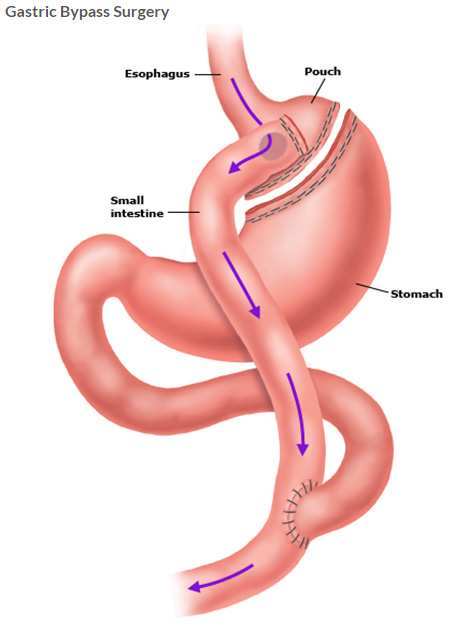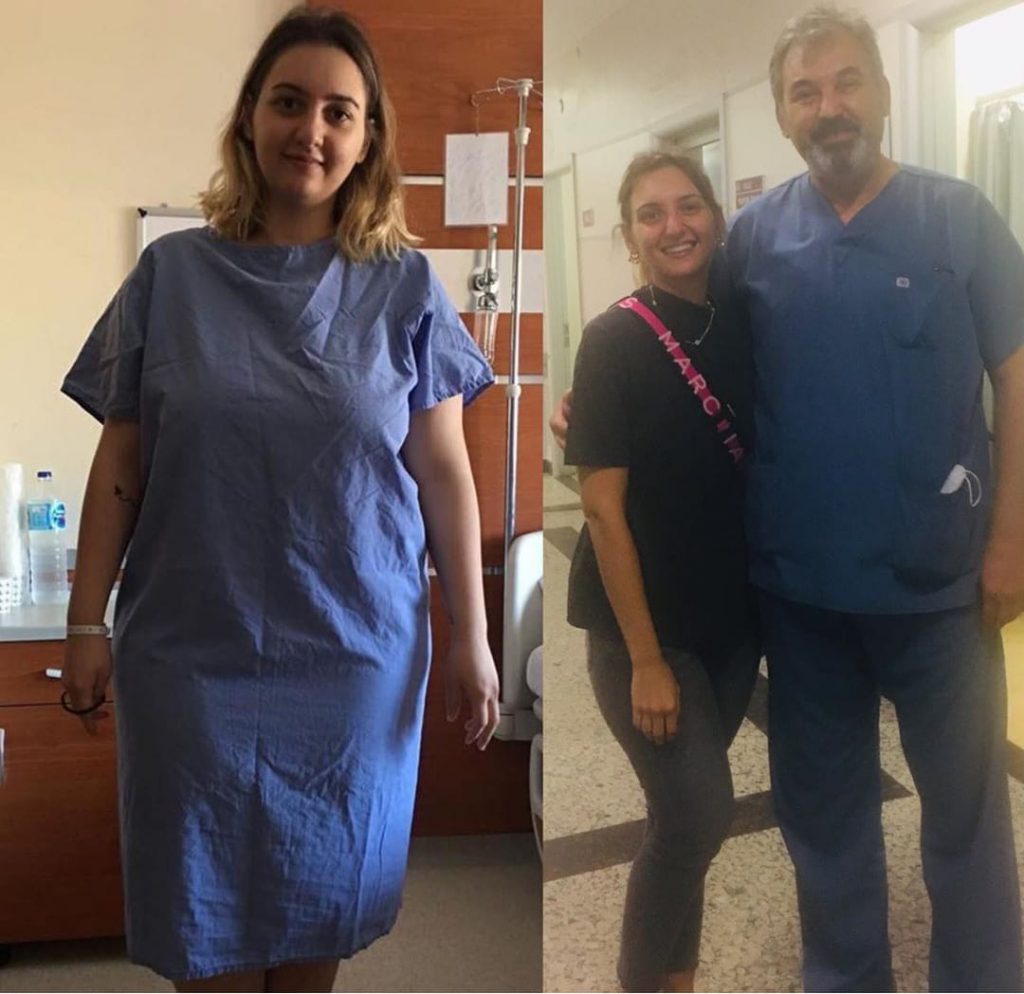Obesity Surgery
Obesity is a chronicle disease that is defined as abnormal or excessive fat accumulation resulted from an imbalance of calorie intake and energy consumption. It can be named as obesity when the body fat is over 25% in men and 30% in women. Despite the fact that there are multiple techniques to define obesity, the most common standardized method is the body and fat index (BMI) which is also approved by the World Health Organization (WHO).
Body Mass Index is a simple calculation with a person’s height and weight.
The formula is BMI = kg/m2 where kg is a person’s weight in kilograms and m2 is their height in metres squared.
A BMI of 25.0 or more is overweight, while the healthy range is 18.5 to 24.9.
BMI <18.5 Undernourished
BMI> = 18,5 – 24,9 Ideal Weight
BMI> = 25 – 29,9 Overweight
BMI> 30 Obesity
30- 34.9 Class 1(Low-Risk) Obesity
35-39,9 Class 2 (Moderate-Risk) Obesity
40 and over Class 3 (High-Risk) Morbid Obesity
BMI> 50 Super Obesity
As in all the living beings’ life, nourishment comes as one of the first steps for survival in human life. Eating habits have constantly transformed during time by changing climate, geopraphical and historical reasons until today.
BMI
Since obesity is a complex and multifactorial disease, it is mentioned that there are multiple factors that lead to obesity. The first reason is the imbalance between calorie intake and energy consumption. Medication usage is also well known for a reason for obesity.
Most of the corruption in obesity is caused by the metabolic consequences of increased production of fatty acids and peptides due to the enlargement of fat cells. Others are the result of the increased mass of fat. The major consequences of obesity are the high rates of mortality and morbidity. With obesity, the size of the abdomen tends to enlarge. At times, there are whitish marks on the abdomen areas due to the excess accumulation of fatty tissues. Another preliminary symptom is that the person tends to have shortness of breath. People with obesity cannot breathe properly because of the accumulation of excess fat in the chest area and below the diaphragm.
Obesity also lead to decreased mobility and it becomes difficult for obese people to move around. They often feel tired and breathless as they have much accumulation of fat in the chest, neck and associated areas of the body. There is a constant feeling of breathlessness and fatigue, which leads lack of activity and movement.
According to the World Health Organisation (2016), there are around 2 billion adults overweight, of those 650 million are considered to be affected by obesity (BMI ≥30 kg/m²). That equates to 39%of adults aged 18 or over who were overweight, with 13% obese. The worldwide prevalence of obesity nearly tripled between 1975 and 2016. It is estimated now that most of the world’s population live in countries where overweight and obesity kills more people than underweight.
WHAT ARE THE TREATMENT OPTIONS FOR OVERWEIGHT OBESITY?
Fortunately, a range of obesity treatment procedures are available, which have helped countless people lose weight and live healthier, longer lives. The least invasive of these treatment options involve working with therapists for intensive behavioral therapy or medical nutrition therapy to overcome eating and weight loss challenges through goal setting, education and monitored dietary changes.
The best options to treat overweight and obesity is to have a healthy eating plan and regular physical activity, new way of eating habits, weight-management programs, special diets or surgical interventions such as gastric balloon operation, gastric sleeve surgery or bariatric surgery.
SURGICAL TREATMENT


Entire operations that can be surgically applied to the individuals who cannot naturally lose weight with proper medical treatments, psychotherapy, exercises or a diet on the condition that they are appropriate with their age, BMI and the other terms, are called as obesity surgeries.. It has been determined that 66% of the patients start to gain weight back again in 24 months when the non-surgical methods are applied. Consequently, obesity surgery treatment has started to be applied more commonly. The treatment of morbid obesity that leaves people with fatal risks and shortens human life is called bariatric surgery.
With bariatric surgery, there comes long-term and permanent weight loss while there are fewer effects of morbid obesity and a longer life span. It can be achievable to have sustainable and efficient weight loss through bariatric surgery. Turkey serves international patients who come all over the world in the field of bariatric surgery professionally. There is a huge success in both pre-operation and post-operation services that are offered and the quality of advanced medical techniques in Turkey.
The cost of bariatric surgery in Turkey in 2020 is accepted on a plain level that gives satisfaction and gets world-wide attention.
WHO IS NOT SUITABLE FOR OBESITY SURGERY?
Obesity surgery that is mostly called as “Slimming Surgery” can be done under some conditions. While evaluating if a patient is suitable for the operation or not, their diseases related to the obesity and psychological situation are checked. So, these criterias are essential:.
First of all, the patient must be prepared psychologically for the slimming surgery. Excessive eating disorder, alcohol and drug addiction, anxiety, depression, schizophrenia, bipolar disorder can make these kind of surgeries difficult.
The patients that are over 65 or that have got liver cirrhosis, diseases that lead to infection or bleeding, or serious heart conditions are in the risk group therefore not suitable for the bariatric surgeries. The patients who have advanced cancer or hypertension are also not suitable for the bariatric surgeries therefore they are not approved for the process.
The patients whose BMIs are not convenient cannot be approved for the bariatric surgeries as well.
TYPES OF THE OBESITY SURGERIES
Surgical treatments have been applied for morbid obesity since the 1950s. Especially when obesity became an increasing problem in the 1980s, vertical banded gastroplasty surgeries started to be applied commonly and attracted attention with their satisfying results.
Surgical treatment of morbid obesity has been accepted as a discipline and the rate of its succeed has been increased since 1990s.
In the studies that is being developed in obesity surgery shows that the patients who has been helped by these kind of surgical treatments has started to have a higher quality of life standarts, a higher capasity of using their physical functions.
All of the surgeries that is applied for patients to eat less by decreasing absorption through interventions on stomach and intestines are called obesity surgery.
Obesity surgery, metabolic surgery and bariatric surgery are the most efficient treatments in obesity according to the studies that are developed so far. The most common obesity surgeries are laparoscopic gastric bypass and sleeve gastrectomy.
Obesity surgery, bariatric surgery or metabolic surgery are called as if they are different types of surgeries time to time. These three terms mean the same and consist the same purpose. The surgery can be called as metabolic since it cures obesity that comes from high cholesterol, diabetes and hypertension; it can be called as metabolic since these three problems called metabolic syndrome and they are cured by the same surgery. “Baros” means heavy and “iatros” means doctor in Ancient Greek. The Word bariatric comes from the connection of these two words to express the treatment of the patients who has got excessive amount of weight.
Some information about how stomach works can help through understanding this surgery’s aim. A gastric sleeve works through removing a large portion of the stomach. Capacity of the stomach is vastly reduced and it starts to have a small portion of food. Feeling full after eating much less food and be less hungry between meals are the results of sleeve gastrectomy surgery.
SLEEVE GASTRECTOMY


Tiny incisions are made in the abdominal wall for the insertion of small trocars. The stomach is examined and the blood vessels to the lateral side of stomach are divided. A Bougie tube is attached into the stomach and performs like a sizer. The stapler is used to divide the stomach into two parts. The stomach is divided by the unceasing firing of the stapler. The stomach is thoroughly divided into two parts. The new banana shaped stomach has almost 25% of original stomach size. Smaller stomach size causes patients to feel full much quicker after the sleeve gastrectomy surgery. It causes people to feel less hungry as well by making hormonal changes such as reduced secretion of hunger hormones.
Sleeve Gastrectomy is applied by laparoscopic surgery tools. Laparoscopy is also called key hole surgery since the stomach is examined by trocars. Patient is under general anestesia and sleeve gastrectomy is applied by professional surgeons. Since small wounds are created during surgery, this makes easier for patient to heal, to feel less pain and the hospital stay is less than any other surgeries.
Laparoscopic Sleeve Gastrectomy is a small and safe operation. It can only last between 40 to 90 minutes except its preparation time. Generally, patient is let to start liquid food intake one day after the surgery and according to the patients’ test results they can be discharged from the hospital in three days.
With Sleeve Gastrectomy, weight loss takes about 60-67% in the first year and it is between 53-65% in the fifth year. After one month, most of the patients can begin their regular exercise routine and they do not have to use medicines. At the rate of 75-80%, the weight is not to be gained back after losing once.
GASTRIC BYPASS


Gastric bypass is a kind of weight-loss surgery that involves creating a small pouch from the stomach and connecting the recently created pouch to the small intestine. After gastric bypass, swallowed food will go into the small pouch of stomach and into the small intestine. Gastric bypass is one of the most common types of bariatric surgery. Gastric bypass is done when diet and exercise haven’t worked or when you have serious health problems because of your weight.
Since the patients’ stomach and intestines are stitched, it is possible to retrieve this operation, but it is not as efficient as sleeve gastrectomy and thus, gastric bypass is not preferred commonly.
METABOLIC SURGERY (DIABETES SURGERY)
Metabolic surgery is a treatment for central obesity that starts with sugar resistance, hypertension and increased cholesterol. Metabolic surgery (Diabetes Surgery) specializes in functional restriction. The treatment aims to activate the ileum-induced appetizing neuropeptide hormones in the early stages of feeding. If the saturation signals through the extremities are too weak or too late, it may be the case that the person consumes too much food until metabolic saturation starts.
LAPAROSCOPIC SLEEVE GASTRECTOMY WITH LOOP BIPARTITION
There is a strong connection between obesity and type II diabetes. Almost all the patients who has bariatric surgery show improvement in their diabetic state. The probability and severity of type II diabetes are closely linked to the patients’ BMIs. One of the main factors leading to diabetes is body fat. Bariatric surgeries alter physiology, and with diabetes, they can affect sugar sensitivity and sugar secretion. Laparoscopic sleeve gastrectomy with loop bipartition surgery is applied in a hospital under general anesthesia. The surgeon makes about five small cuts in tummy. The surgeon does the surgery by using a thin, long, telescope with a tiny camera at the end. Instruments pushed through the incisions are used to remove about 80% of the stomach by using images on a TV screen in the operating room.
This surgery takes out the part of your stomach that curves outward, called the fundus. After the fundus is taken out, it is closed the rest of the stomach into a tube shape that. Because having a much smaller stomach, patients fill up quickly at mealtimes and eat less.
Laparoscopic sleeve gastrectomy with loop bipartition surgery is a surgery that is applied commonly and with a high rate of success. Patients that come all over the World starts to have Laparoscopic sleeve gastrectomy with loop bipartition surgeries.




